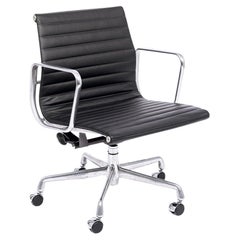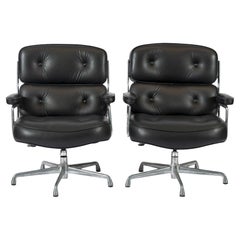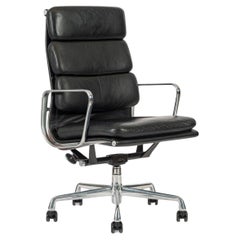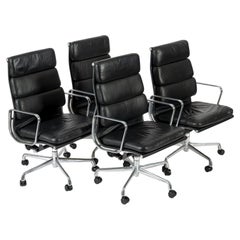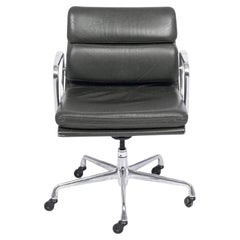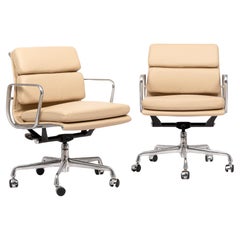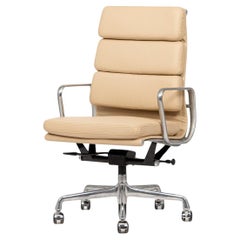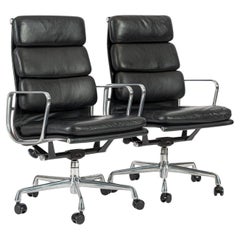Eames Office Chair Leather
21st Century and Contemporary American Mid-Century Modern Office Chairs ...
Aluminum, Steel
2010s American Mid-Century Modern Office Chairs and Desk Chairs
Aluminum, Steel
2010s American Mid-Century Modern Office Chairs and Desk Chairs
Aluminum, Steel
Early 2000s American Mid-Century Modern Office Chairs and Desk Chairs
Aluminum, Steel
Early 2000s American Mid-Century Modern Office Chairs and Desk Chairs
Aluminum, Steel
Early 2000s American Mid-Century Modern Office Chairs and Desk Chairs
Aluminum, Steel
21st Century and Contemporary American Mid-Century Modern Office Chairs ...
Aluminum, Chrome
Early 2000s American Mid-Century Modern Office Chairs and Desk Chairs
Aluminum, Steel
Early 2000s American Mid-Century Modern Office Chairs and Desk Chairs
Aluminum, Steel
Vintage 1960s German Mid-Century Modern Office Chairs and Desk Chairs
Aluminum, Chrome
Vintage 1980s American Mid-Century Modern Office Chairs and Desk Chairs
Aluminum, Steel
Vintage 1980s American Mid-Century Modern Office Chairs and Desk Chairs
Aluminum, Steel
Vintage 1960s German Mid-Century Modern Office Chairs and Desk Chairs
Aluminum
21st Century and Contemporary American Mid-Century Modern Office Chairs ...
Aluminum, Chrome
Early 2000s American Mid-Century Modern Office Chairs and Desk Chairs
Aluminum, Steel
Vintage 1950s German Mid-Century Modern Office Chairs and Desk Chairs
Aluminum, Chrome
1990s American Mid-Century Modern Office Chairs and Desk Chairs
Aluminum, Steel
Vintage 1950s Brazilian Mid-Century Modern Office Chairs and Desk Chairs
Metal
Vintage 1970s Italian Modern Office Chairs and Desk Chairs
Metal
1990s American Mid-Century Modern Office Chairs and Desk Chairs
Aluminum, Steel
Vintage 1970s American Mid-Century Modern Office Chairs and Desk Chairs
Aluminum, Steel
Early 2000s German Mid-Century Modern Office Chairs and Desk Chairs
Aluminum
Early 2000s American Mid-Century Modern Office Chairs and Desk Chairs
Aluminum, Steel
Vintage 1960s German Mid-Century Modern Office Chairs and Desk Chairs
Chrome
Late 20th Century Mid-Century Modern Office Chairs and Desk Chairs
Aluminum
2010s American Office Chairs and Desk Chairs
Aluminum
Early 2000s American Office Chairs and Desk Chairs
Aluminum
Vintage 1950s Danish Scandinavian Modern Office Chairs and Desk Chairs
Aluminum
Late 20th Century American Mid-Century Modern Office Chairs and Desk Chairs
Aluminum, Chrome
Vintage 1960s American Mid-Century Modern Office Chairs and Desk Chairs
Chrome
21st Century and Contemporary American Mid-Century Modern Office Chairs ...
Aluminum, Chrome
Early 2000s American Mid-Century Modern Office Chairs and Desk Chairs
Aluminum, Steel
21st Century and Contemporary American Mid-Century Modern Office Chairs ...
Aluminum, Steel
Early 2000s American Mid-Century Modern Office Chairs and Desk Chairs
Aluminum
2010s American Mid-Century Modern Office Chairs and Desk Chairs
Aluminum
2010s American Mid-Century Modern Office Chairs and Desk Chairs
Aluminum
21st Century and Contemporary American Mid-Century Modern Office Chairs ...
Aluminum
Early 2000s American Mid-Century Modern Office Chairs and Desk Chairs
Aluminum, Steel
Vintage 1980s North American Mid-Century Modern Office Chairs and Desk C...
Aluminum
Early 2000s American Mid-Century Modern Office Chairs and Desk Chairs
Aluminum
Early 2000s American Mid-Century Modern Office Chairs and Desk Chairs
Aluminum, Steel
20th Century Mid-Century Modern Office Chairs and Desk Chairs
Leather
Early 2000s American Modern Office Chairs and Desk Chairs
Aluminum, Steel
21st Century and Contemporary American Mid-Century Modern Office Chairs ...
Aluminum, Chrome
Early 2000s American Mid-Century Modern Office Chairs and Desk Chairs
Aluminum
21st Century and Contemporary American Mid-Century Modern Office Chairs ...
Aluminum, Chrome
21st Century and Contemporary American Mid-Century Modern Office Chairs ...
Aluminum, Chrome
21st Century and Contemporary American Mid-Century Modern Office Chairs ...
Aluminum, Chrome
Vintage 1980s American Mid-Century Modern Office Chairs and Desk Chairs
Aluminum
Vintage 1980s American Mid-Century Modern Office Chairs and Desk Chairs
Aluminum
2010s American Mid-Century Modern Office Chairs and Desk Chairs
Aluminum
2010s American Modern Office Chairs and Desk Chairs
Aluminum
Vintage 1980s American Mid-Century Modern Office Chairs and Desk Chairs
Aluminum
2010s American Mid-Century Modern Office Chairs and Desk Chairs
Aluminum
Vintage 1970s American Modern Office Chairs and Desk Chairs
Aluminum
21st Century and Contemporary American Mid-Century Modern Office Chairs ...
Aluminum
Early 20th Century American Mid-Century Modern Office Chairs and Desk Ch...
Aluminum, Steel
21st Century and Contemporary American Mid-Century Modern Office Chairs ...
Leather
- 1
- ...
Eames Office Chair Leather For Sale on 1stDibs
How Much is a Eames Office Chair Leather?
Finding the Right Office-chairs-desk-chairs for You
An essential part of every office or home workstation, office chairs and desk chairs are critically important to your comfort and getting the job done.
Desk chairs have evolved over time. While writing the Declaration of Independence, Thomas Jefferson pined for a wider range of motion and introduced some improvements to his English-style Windsor chair, inventing the swivel chair along the way. So the next time you roll, recline or swivel at your vintage desk, remember: The third president of the United States had a lot to do with that functionality.
Changes in the availability of resources have also led to innovations in desk chair design. After World War II, for example, optimistic American designers made use of wartime materials in their efforts to create practical domestic goods.
Mid-century modernism is the name given to the broad postwar time period that prioritized thoughtful design. Journalist Cara Greenberg, who coined the term “mid-century modernism,” cites “ergonomic wisdom” as part of the reason for the longevity of the era’s furnishings, and when it comes to sitting in a desk chair for hours at a time, what could be more important than ergonomic support?
As mid-century modernism was marked by resourcefulness and boundless creativity — and produced designers who, in most cases, prioritized comfort and support — it follows that all mid-century chairs are not the same. Nowhere is this perhaps more evident than at Herman Miller. The legendary Michigan furniture manufacturer got its start in the office, with design director George Nelson enlisting the likes of Charles and Ray Eames to produce desk chairs and lounge chairs that are still celebrated today. Elsewhere at the time, the numerous pieces Florence Knoll created for Knoll’s office furniture line were envisioned as design solutions for the changing needs of residential and office spaces.
If you’re working remotely and streamlined seating isn’t your thing, don’t be afraid of making a statement with your office chair. Introduce a touch of drama to your video calls by way of 19th-century desk accessories and the alluring forms we typically associate with antique desk chairs designed in the Empire and Regency styles. For a minimalist touch, a spare, utilitarian Industrial-style office chair can work in any space but will fit in particularly well amid the exposed brick and steel architecture that characterizes a loft apartment.
An inspiring home office cleverly mixes materials and styles to create a welcoming place of productivity and comfort, and if you’re gathering with colleagues at your company HQ, an array of wood, leather and metal office chairs can help integrate disparate textures in a conference room or any other collaborative space. On 1stDibs, explore a diverse collection of office and desk chairs today.
Read More
All the Furniture in This Organic Modern Soho Loft Can Be Yours
Andrianna Shamaris has filled her epic new home with pieces of her own design.
20 Inviting Dining Rooms Perfectly Arranged for Entertaining
Top interior designers show — and tell — us how to create delectable spaces for hosting dinner parties.
Nobody Puts This Sunny Sofa in a Corner
With its plush cushions, cane details and dazzlingly colorful back, it’s inviting from every angle.
The 21 Most Popular Mid-Century Modern Chairs
You know the designs, now get the stories about how they came to be.
Fred Rigby’s Modular Seating Can Be Configured in So Many Handy Ways
The plush Cove Slipper 2.5 Seater sofa is just one of many convenient combinations from the London-based maker.
This Chubby-Chic Quilted Stool Stands on Its Own Two Feet
Sam Klemick's cool stool is edgy, cozy and environmentally sustainable all at once.
Is Lionel Jadot the Willy Wonka of Upcycled Belgian Design?
From his massive collaborative workshop in a former paper factory, the designer concocts funky furniture from disused materials, as well as luxe hotel interiors like the new Mix Brussels.
Rock Your Cares Away on This Sunny Hand-Crocheted Swing
The boho-chic Enchanted Forest Swing, handmade by marginalized women from Turkey and Syria, is uplifting in every way.
